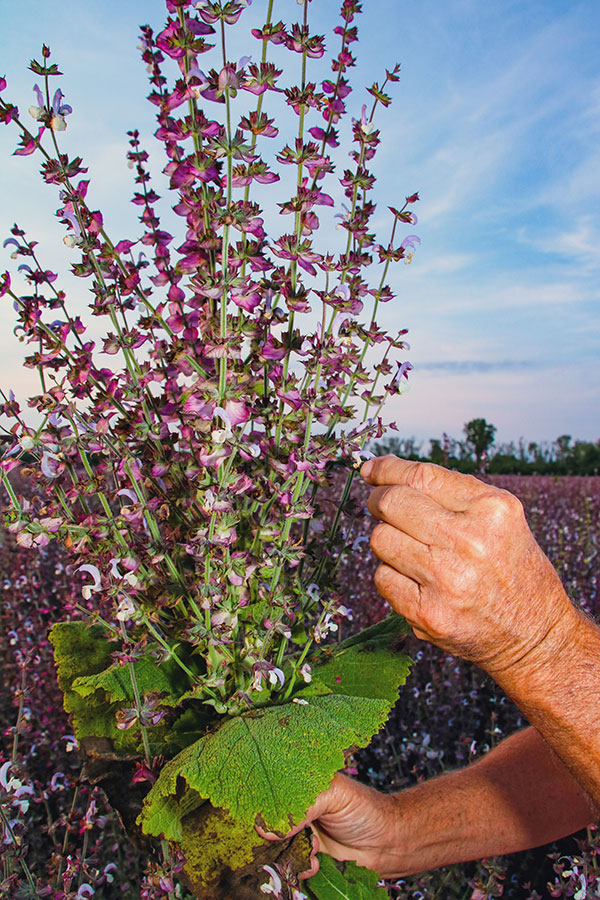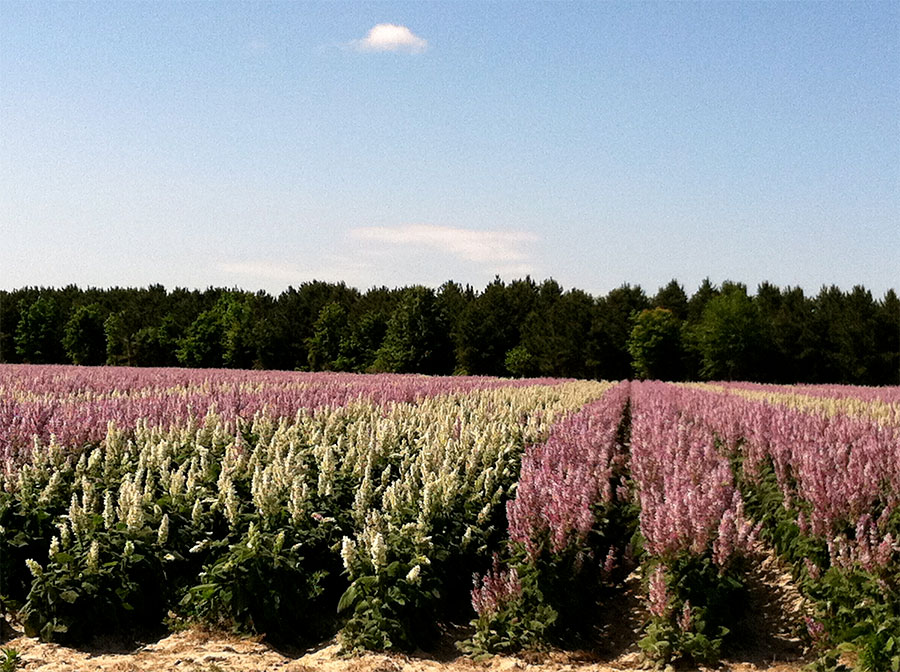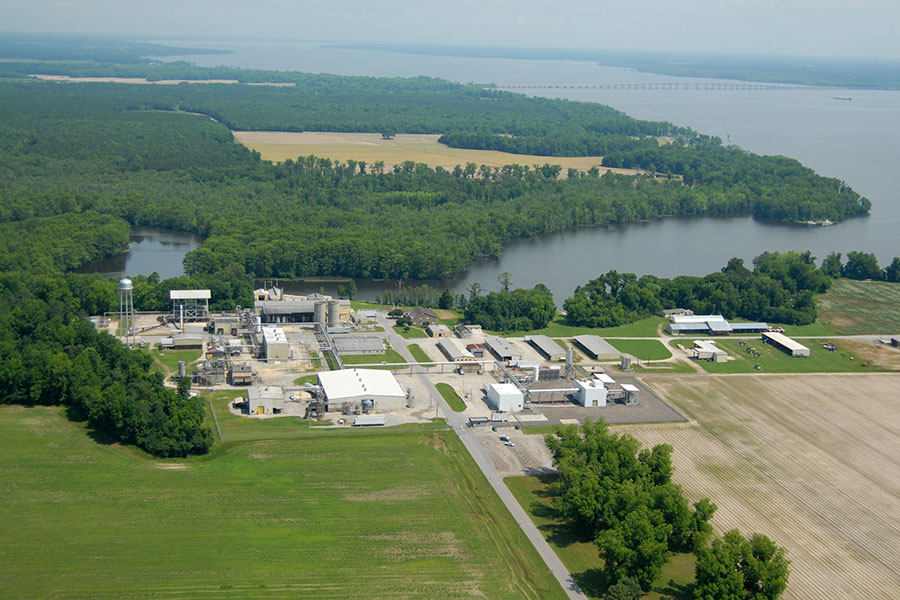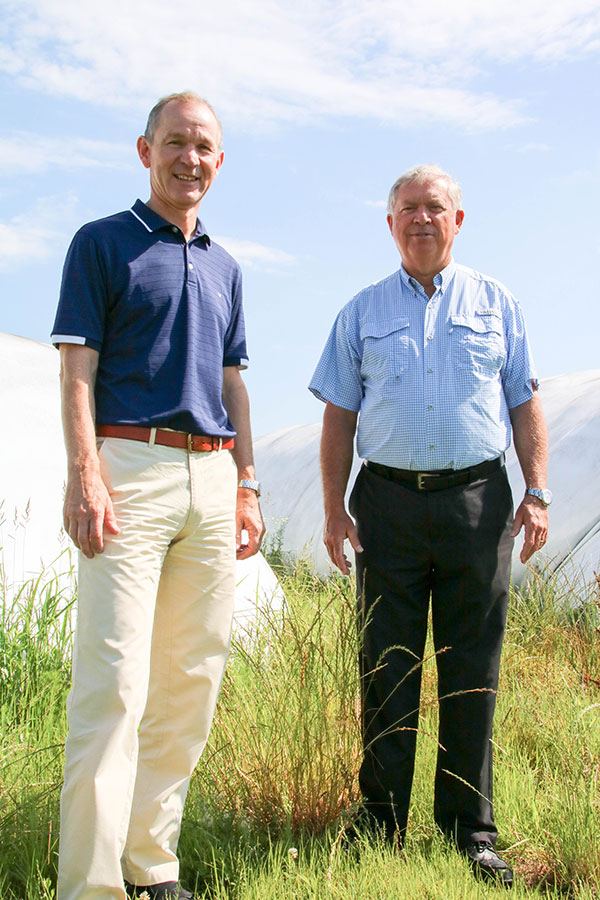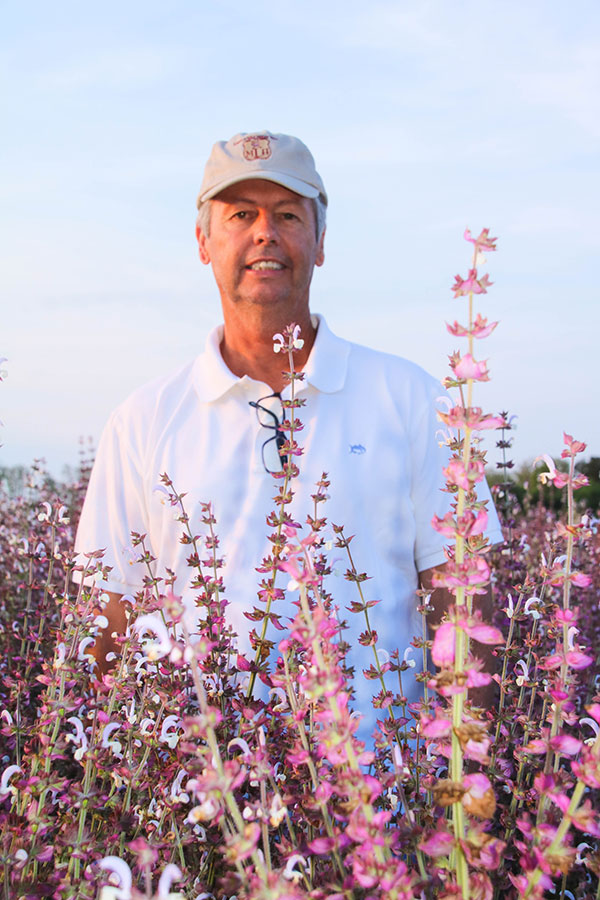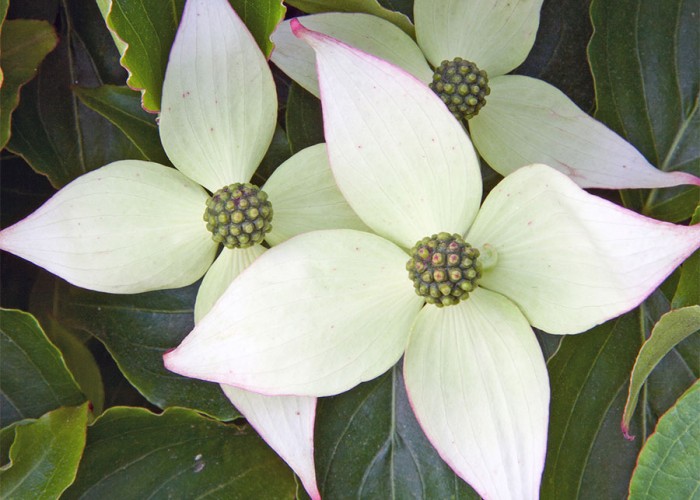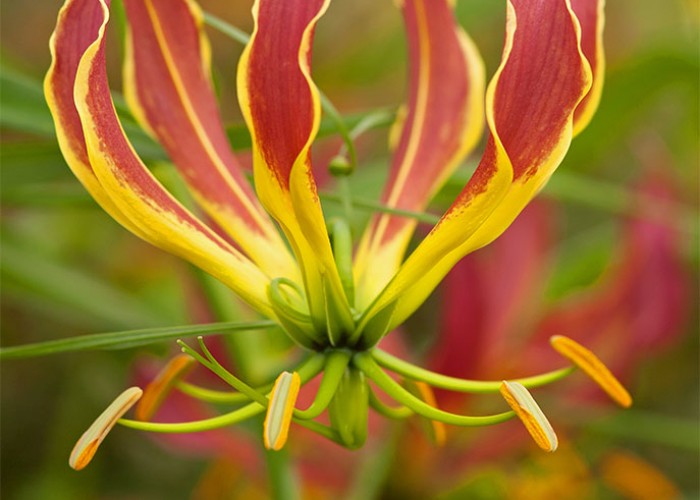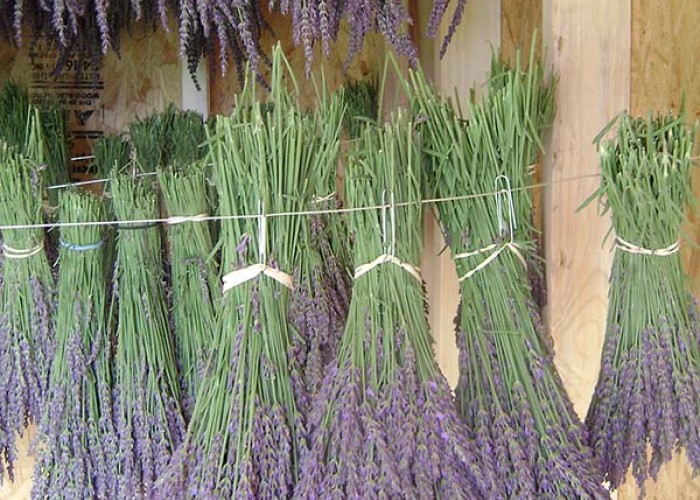A Local Crop’s Prized Compound
Clary sage helps make the world smell good
By Leah Chester-Davis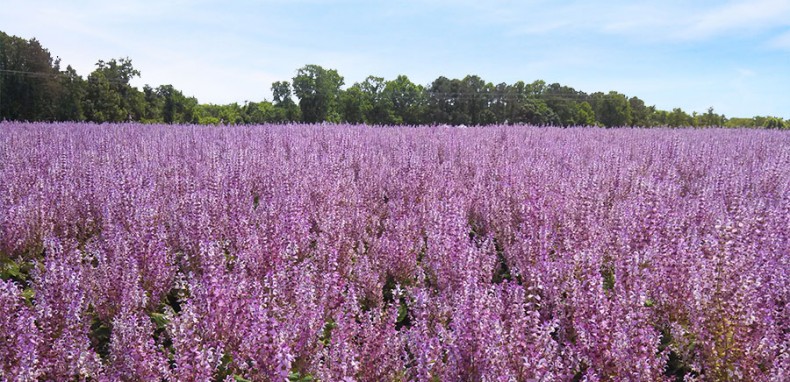
Photo by Leah Chester-Davis
It’s not often that you hear a farmer talking about the benefits of eastern North Carolina’s sandy loam soil and in the same conversation mention the French luxury brand Chanel.
But Chowan County farmer Mike Parrish does just that as he wades into a sea of tall, spiky clary sage plants to check how soon they might be harvested. Parrish is one of about 100 farmers in the region — and one of very few places in the entire United States — growing clary sage. Clary sage has a substance used in fine perfumes (including Chanel fragrances), laundry detergents and fabric softeners to make the scent last longer. In other words, North Carolina helps make the world smell good.
Parrish was one of the first farmers in the state to start growing the crop 30 years ago for Avoca, a global bioprocessing company located in the tiny crossroads of nearby Merry Hill. The company is responsible for the region becoming the center for U.S. clary sage production.Avoca extracts a prized compound known as sclareol from the plants. A bioconversion process transforms a wax-like substance to crystals. It’s purified and then recrystallized, explains Dr. David Peele, president of the company. That purified crystallized substance, known as sclareolide, is what Avoca sells to fragrance companies in Europe, which use it to produce the fixative that makes scents last longer. They then sell it worldwide, including to such household product powerhouses as Proctor & Gamble and Unilever. It ends up in many of the products in the laundry aisle of your favorite grocery store, in addition to fine perfumes.
Showstopper crop
When in full bloom, clary sage paints thousands of acres of the eastern North Carolina landscape pink, purple or white, depending on the variety. In May and until the crop is harvested in June, it is a real showstopper. One of the favored stories among farmers and Avoca employees is how beach-goers traveling down Highway 64 will stop and pick a bouquet, only to throw it out of their cars and onto the roadside a few miles down the road. It has an overpowering aroma.
For Parrish and other farmers, clary sage came along at the right time, when the tobacco buyout program meant many farmers needed to transition to new crops.
“Clary sage filled that void,” says Parrish, a third-generation farmer who has several crops in rotation — peanuts, wheat, sage, soybeans and cotton. “When the crop was first grown, it was used only in perfumes. You can’t wash it out. That’s why Chanel uses it in their perfume, because it’s the best fixative.”
When Avoca expanded its reach, getting companies to use the sage‑based fixative in laundry detergents and fabric softeners, the demand for the crop grew. Parrish and other farmers benefited.
“It’s been huge. Tobacco used to be our money crop. Sage filled that void, and I was thrilled to get out of tobacco and for something to replace it.”
Unusual roots
Ironically, while clary sage has replaced tobacco as a high-value crop on some of the region’s farms, the roots of the clary sage crop and the extraction facility extend back to the R.J. Reynolds Tobacco Company.
In the 1960s, R.J. Reynolds wanted to replicate a Turkish tobacco flavor. The plan was to grow clary sage for the purpose of using sclareolide as a starting point, says Peele, who worked for the company from 1978 to 2003. The company embarked on growing its own crop and contracting with a few growers but by the mid-1960s abandoned the project. The extraction plant was mothballed.
In the mid-1970s, a German company approached R.J. Reynolds about getting back into the clary sage business to produce sclareolide, an essential ingredient in ambroxide, a fixative used in the fragrance industry. The product is the substitute for ambergris, a byproduct from sperm whale digestion. (Ambergris, sometimes called gray amber, occasionally washes up on beaches as a dark gray or black lump. It has long been prized for its seemingly unlikely use in fine perfumes. As far back as the late 1600s, it is noted in literature for its trade appeal for those seeking fortune. Herman Melville’s Moby‑Dick, published in 1851, includes a chapter about ambergris.)
A combination of factors contributes to the need for the clary sage compound to replace ambergris: the sperm whale’s endangered status and the demand for a fixative for a multitude of products.
“There is not enough ambergris produced naturally to be able to supply the fragrance industry,” says Peele.
When R.J. Reynolds divested of the extraction facility in early 2003, Peele and a partner bought the company and continued the name Avoca, which was part of a New Jersey company known as Pharmachem Laboratories. Last year, Avoca was purchased by Ashland Group Holdings, a $3 billion specialty ingredient company. While clary sage and its resulting product happen to be Avoca’s largest, the company also extracts other compounds from other plants for the dietary supplement industry.
“It gives a warm, very luxurious note to the fragrance besides the long-lasting effect,” Guus Gerritsen, Avoca’s director of sales and marketing, says about the sage-based product. “So for fine fragrances it is mainly the amber woody note whereas in consumer products it’s the long-lasting effects.”
Guus Gerritsen (left) and David Peele in front of bags that store clary sage. Photo by Leah Chester-Davis.
Famous plants
Over the past couple of years, nationally aired TV advertisements have given a nod to the North Carolina crop. Commercials tout the long-lasting scent of “Gain flings!” laundry detergent. One shows a man, played by actor Ty Burrell from the TV show “Modern Family,” on a beach holding a green scarf, which had apparently been washed a month ago but still holds its pleasant scent.
Mike Parrish of Chowan County is one of about 100 farmers in the region growing clary sage. Photo by Leah Chester-Davis.
“That is because of this product right here,” says Peele as he picks up a small cosmetic tub on a conference table at the Avoca headquarters. That is because Merry Hill, North Carolina, grows clary sage. It is the most beautiful commercial in the world as far as I’m concerned.”
It’s also a source of pride for Parrish that the crop he raises is used in national and international brands. But changes seem to be on the horizon, one that may affect Carolina farmers. Parrish shares that in the 30 years he has grown the crop, this is the first year that acreage has been reduced. Peele attributes that to a surplus as a result of high yields in recent years. He says the amount of acreage grown each year likely will be adjusted based on inventory.
Parrish and other farmers are concerned it signals that big companies are switching from a natural product to a synthetic one. Peele confirms that alternative sources of fixatives are available to large customers.
“As always, it is a performance versus cost issue depending on the price a consumer is willing to pay for a fragrance or laundry product,” he explains, adding that he expects clary sage to continue to be grown in eastern North Carolina for the foreseeable future of 10 to 20 years.
“You just wish you could get everybody to figure it out, that natural products are being used, and you hope it would matter what the consumer thinks,” Parrish says.
As he walks to his truck, he turns his attention back to the sandy soil. He mentions how it helps water drain into a nearby swamp, and the expertise the company provides to him and other farmers growing the crop (sage has a tiny seed and has to be planted much shallower than other crops).
“People ask us how we grow such pretty sage. We have the expertise, the soil type and, of course, the Good Lord above has to give you rain and the weather.”
-
More Carolina flowers
-
Share this story:

